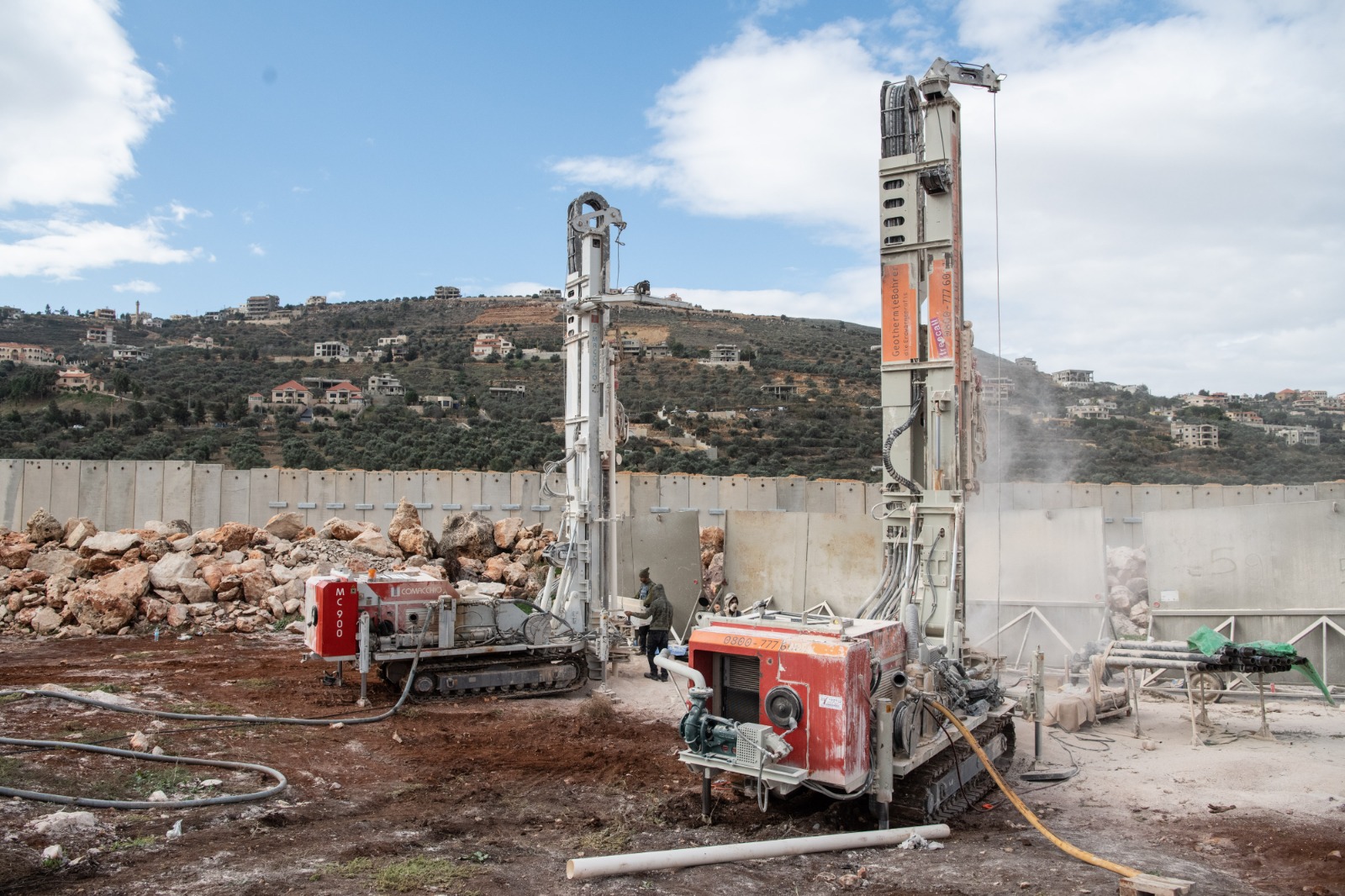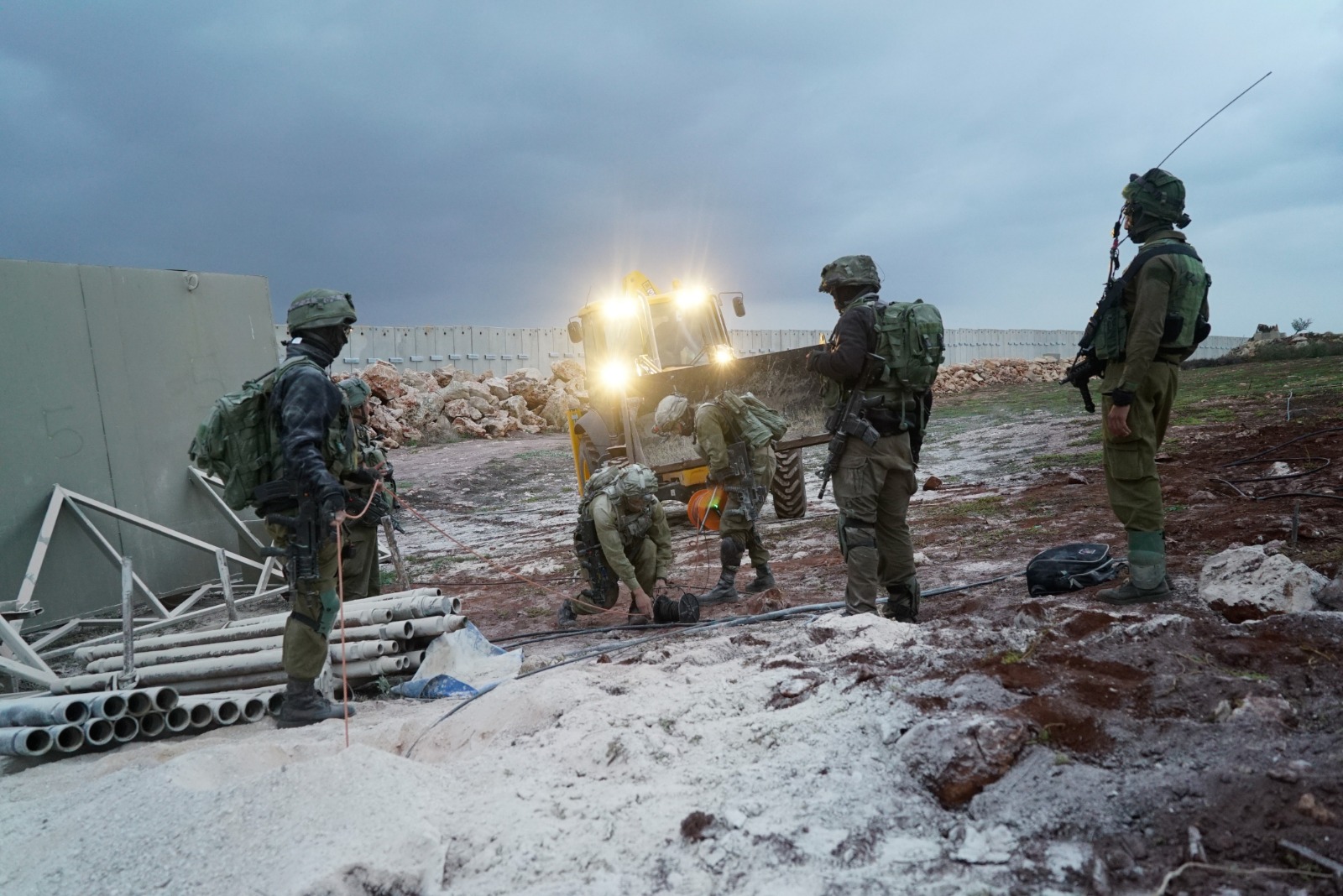Senior officer says terror group planned to capture part of Galilee panhandle; seismic sensors helped army find cross-border underground infrastructure
The Hezbollah attack tunnels crossing into Israeli territory from Lebanon that Israel has begun to uncover were to be used by the Iran-backed terror group for a surprise attack to kick off a future war, a senior IDF officer said Wednesday.
The army believes the tunnel uncovered Tuesday east of the Lebanese village of Kafr Kila was meant to let in Hezbollah fighters who would cut off the Israeli town of Metulla, which lies directly along the border with Lebanon, said the senior officer in the military’s Northern Command, who spoke on condition of anonymity. The idea was to cut off Metulla from the south, including by blocking the main entry road, Route 90.
The officer, citing military assessments, said Hezbollah planned to use the tunnels as part of a wider operation to conquer parts of the panhandle in Israel’s Galilee in a future conflict.
“Capturing parts of the Galilee by Hezbollah is a concrete threat,” he said. “It is also part of a regional and global terror effort led by Iran.”
The one tunnel the army says it has uncovered so far reached 40 meters (130 feet) into Israeli territory outside Metulla, and was two meters (six feet) tall by two meters (six feet) wide. It’s unclear how many fighters Hezbollah could have sent through the tunnel before being detected and if they would be enough to capture or hold significant swaths of Israeli territory.
The army has not said how many other cross-border tunnels it believes there are.
Israel’s last major confrontation with Hezbollah, 2006’s Second Lebanon War, was sparked when the terror group managed to infiltrate just over the border, kill several soldiers and capture two of their bodies.

Approximately seven years ago, Hezbollah created a special forces unit — known as the Radwan Unit — specifically tasked with crossing into Israel and causing as much mayhem and destruction as possible both for the sake of the damage to Israel itself and for the symbolic victory of having troops carry out attacks inside Israel.
Northern residents have raised fears in recent years of attack tunnels being dug under the border, spurring the IDF to launch a task force to investigate the concerns in 2013. However, initial searches turned up nothing. Only later, after the military’s tunnel-finding techniques improved following the 2014 Gaza war, was the IDF able to find the Hezbollah tunnels.
Speaking to reporters on Wednesday, the senior official said none of the Hezbollah tunnels into Israel was completed when the IDF early Tuesday launched its operation to find and destroy them — dubbed Northern Shield — and thus did not present an immediate threat to residents of the area.
According to the officer, Hezbollah was at least several months away from having operational tunnels.

“None of the tunnels was ready for war tomorrow. In some cases, it was a matter of months and in other it was a matter of years before they’d be operationally ready,” he said.
Hezbollah operatives were still working in the tunnel uncovered on Tuesday up until it was exposed by the IDF, according to footage released by the Israeli military.
The video, filmed by a robot sent into the tunnel on Tuesday morning, shows two men entering the tunnel and approaching the camera before the robot triggers a small explosive device, scaring the men away.
“Hezbollah’s rate of progress was just a few meters per week, and so we decided to bring down the tunnel project now from an understanding that it is in full swing and before it can become an actual threat to residents of the area,” the officer said.
The senior officer said IDF Chief of Staff Gadi Eisenkot initially pushed for the operation to begin two months ago, but Northern Command officers requested more time in order to make the necessary engineering preparations.
Ultimately, Eisenkot presented the cabinet with the plans for the operation and received approval on November 7, the chief of staff said Tuesday night.
The Northern Command officer said the army’s operation to uncover the tunnels came as a “surprise” to Hezbollah, which had tried to keep its subterranean program a secret even within the terrorist organization, employing only a small number of workers to dig the tunnels.
“Hezbollah now appears surprised and even embarrassed by our operation,” the officer said.
“Since the start of our activities, [Hezbollah] has decided to lower its profile. At this point, it seems to be trying to understand what we know and what we don’t, but I think that Hezbollah has not figured out how much we know about its tunnel project, and it will be even more surprised going forward,” he said.

While the IDF believes it has fully mapped out Hezbollah’s tunnel infrastructure, the officer allowed for potential “surprises,” but said that chances of that were low.
“There are some places we know more about, and some that we know less about. But we have the means to see through the operation to the end — to find and destroy them all,” the senior officer said.
The officer said the tunnels were discovered using seismic sensors, which were buried underground.
“Using audio systems, [troops] are able to listen to the ground and identify suspicious activities,” he said.
The officer indicated that this type of system was different from the one used to detect tunnels dug by Hamas and other terror groups from the Gaza Strip, owing to geological differences between the mountainous north and the sandy flatlands in the south.
“Here the ground is rocky, and therefore digging here makes more noise that can be detected by the system,” he said.

The senior officer said the IDF was still working out how best to destroy each of the tunnels. In the Gaza Strip, Israel has both blown up tunnels with explosives and filled them with concrete and other materials in order to seal them off. However, he said, the same type of measures may not as work as well in the rocky terrain of northern Israel as they do around Gaza.
According to the IDF, the Hezbollah tunnel discovered Tuesday took over two years to excavate — due to the harsh terrain under the border — and contained electrical and communication lines as well as ventilation.
“Hezbollah has been using industrial equipment in order to dig these tunnels. We are beginning to assess and analyze the findings,” an army spokesperson said.
Tuesday’s operation came as tensions on Israel’s northern border have ramped up in recent days, and hours after Prime Minister Benjamin Netanyahu traveled to Brussels for a meeting with US Secretary of State Mike Pompeo to discuss Iran and the Hezbollah tunnels.
The IDF operation began in the predawn hours of Tuesday morning. The military declared the area around the community of Metulla a closed military zone, but gave no other special instructions to Israeli civilians in the area.
The military remained on high alert around the border as a precautionary measure in case Hezbollah responded violently to the IDF operation.



Leave a Reply
You must be logged in to post a comment.